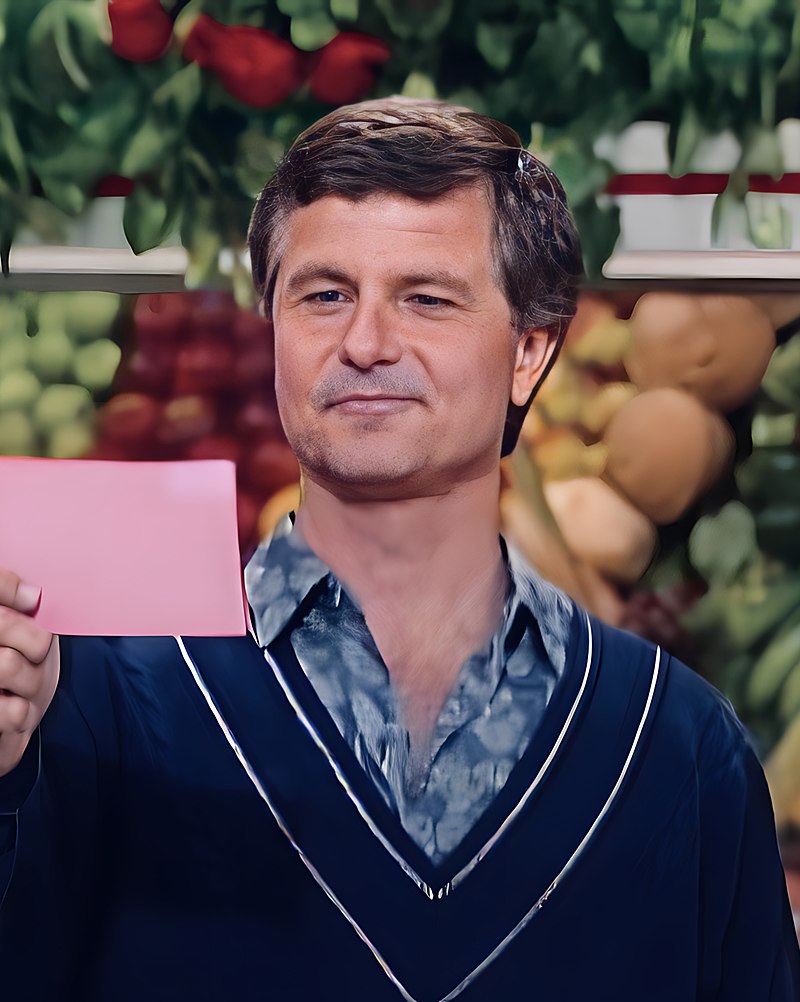A classic television game show that combines a conventional team-based quiz show with the innovative idea of a live, timed sprint through a supermarket.
Supermarket Sweep is an American game show that was first broadcasted from December 20, 1965 to July 14, 1967 on the ABC Network. It was then revived and shown from February 5, 1990 to June 16, 1995 on the Lifetime Network, and again from April 3, 2000 to May 23, 2003 on the PAX Network. The format had three teams of two competitors, and it was a mix between a traditional “items found in a grocery store” quiz show and the cutting-edge idea of a live, timed race around a supermarket. During its 11-season, 12-year run on three networks, the program produced and broadcast more than 1,400 episodes.
Background of the Show
Supermarket Sweep assesses a shopper’s supermarket knowledge. In this timed supermarket shopping challenge, players compete to rack up the biggest bills by grabbing as much as they can in a limited amount of time. Three shopping teams fight to gain precious shopping time by answering product-related questions, tales, and cognitive puzzles. Each right response earns the replying team additional shopping time.
The participants’ carts are maneuvered around the aisles to gather as many products as possible during the Big Sweep round. When the final bell rings, the shopper with the highest grocery spend wins the game and advances to the Super Sweep bonus round. The team has to successfully find three goods whose names are cleverly hidden by funny stories. The team wins the grand prize if they bring all three things back to the check-out counter before time runs out.
The Hosts
Bill Malone hosted the version from the 1960s. Wally King was the announcer from 1965 to 1966, and Richard Hayes was the announcer from 1966 to 1967. David Ruprecht hosted the Lifetime and PAX versions. Johnny Gilbert served as the announcer for the years 1990 to 1995 and again during the months of April to June 2000. Randy West succeeded Johnny Gilbert as the announcer beginning in July 2000 and remained in that role for the remainder of the series. Leslie Jones acted as the show’s host, while Tahir Moore was the one who provided the narration.
Gameplay
Malone Version
There were three competing teams. Each team started with a base time of one minute and thirty seconds. One competitor from each side was given a supermarket item and asked to predict its retail price in the first round of the game. The item was awarded to the group who came the closest, and they also received an extra 15 seconds to their total time. There were four items shown.
In the second round, the player from each team who did not participate in the first round used the extra time to go on a shopping spree. Bonus products ranging from $10 to $100 were also distributed around the store. Each team retained each item they collected, and the team that accumulated the largest combined value of groceries, extra prizes, and other items would advance to the next round. Teams remained on the program until they were eliminated or until they won $20,000 in total.
Ruprecht (Lifetime/PAX) Version
Supermarket Sweep’s Lifetime/PAX version featured three gameplay segments: the Question Round, the Big Sweep, and the Bonus Sweep. The competition had three teams consisting of pairs with family connections, such as parent-child, spouses, siblings, or close friends. It is worth noting that, in this particular iteration of the game, the last names of the competitors were not disclosed, and is save on rare occasions. The team members wore matching sweatshirts for the Bonus Sweep (aqua blue for Team #1 (green in previous tapings), burgundy for Team #2; yellow for Team #3 (blue in earlier tapings).
Question Round. At the outset of the game, each of the three teams was given a base time of 1:30, the same as in the original. Time was added to their clocks for every question they answered correctly. Three sections made up the Question Round. In the first two phases, one member of each team alternated between answering various questions and/or participating in one of many pricing games that required determining the prices of common supermarket goods. The third segment of the competition was a game called “Round Robin,” in which the members of each team switched places after each question.
Big Sweep. The “Big Sweep” was a round gave the teams the opportunity to sprint around the shop and remove things off the shelves using the seconds they won in the front round. The teams were given numbers depending on the total amount of time they had accumulated: 1 for the most time, 2 for the second-most time, and 3 for the least amount of time. One participant from each team was appointed as the “runner,” and their task was to gather goods in a shopping cart.
The Big Sweep clock was set to the primary time, and it began when Team 1 entered the market. Teams 2 and 3 were sent out when their respective times were displayed on the timepiece. In the event of a tie among any of the teams, they were simultaneously sent to the market.
At any moment during the race, the runner might return their cart to the team’s register and get a new, empty cart. The runners’ totals included the cost of everything still in their carts when the timer went off.
The following were the Big Sweep’s three primary rules:
- Only five of each item may be taken by each team.
- A fine of $25 per item was imposed if any of the contents of a customer’s cart were dropped or damaged in any way. If a team ran into a supermarket display, cameraman, or other employee, they were fined $100.
- Ruprecht claims that only one member of each team was allowed in the shop at a time (with exemption for moneymaker activities of certain money makers), while the other remained at the checkout line to unload the goods, earning them the nickname “Check stand Cheerleaders.”
Bonus Sweep. During Ruprecht’s time as host, the bonus round was known as the “Bonus Sweep.” he winning team was given a time limit of 60 seconds to successfully acquire three certain things consecutively in order to win a monetary prize of $5,000. Ruprecht gave the team a tip that helped them figure out what the first thing was, and the team sprinted inside the market as the time began ticking. A huge circular token with the show’s logo and a hint for a second item was attached to the right item. This item led to a third item that, when opened, revealed a bundle of $5,000 cash. The team had to get all three things and the money before time ran out in order to win. If they fell short, they were compensated $200 for each item discovered. The team had to have the money in their possession before the bell rang. The record for the quickest victory was 29 seconds, achieved in late 1990 during the second season.
Originally, if the team discovered the final product and $5,000 before the other two, they would immediately lose the bonus round. In 1992, however, an overhead announcement was introduced to serve as a gentle reminder for the team to track down the first two items before heading back to the third product to collect their reward.
In 2020, the bonus round was renamed “Super Sweep”. All three things had to be found within the same time frame and under the same conditions as the Bonus Sweep, but the winner would get $25,000 instead. The third thing wasn’t a bundle of cash; it was a sealed envelope that was hidden behind it. They could “cash out,” completing the game and retaining the $25,000, or they could exchange it for 20 more seconds to uncover a fourth item, this one worth $50,000 and marked with a different envelope. If they were successful, they would have the option to either pay out or swap the money for an additional 15 seconds to locate a fifth and final item that was worth $100,000 and was marked with an enormous gold dollar in that amount. If the team choose to keep going after locating the third or fourth object, the time would start again as soon as the next clue envelope was opened. The team would only win what they had won in the Big Sweep if time ran out.
Jones Version
In terms of the gameplay, the Jones version adhered to the same structure as the Lifetime/PAX period that came before it. The game would begin with a Mini Sweep, then go on to the Question Round, followed by the Big Sweep, and then end with the Bonus Sweep. Some small modifications were made, however.
The program was now one hour long, with two complete games played every half-hour and no returning champions. Teams still comprised of relatives (parent/child, spouse/sibling, etc.), but they were no longer referred to by number; instead, they were given names based on foods. In addition, sweatshirts were no longer the only option for team uniforms; instead, players wore a wide variety of different-colored and -styled shirts.
Mini-Sweep. The game began with a Mini-Sweep, as Jones read a puzzle that led to a product located on the shelf, however, the actual Mini-Sweep that was played was quite different from the previous one. Instead of the traditional method of buzzing in to try to predict the product and then searching for it within the allotted amount of time, the game was modified such that one member of each team dashed out to discover the product as soon as she had completed reading the clue. In place of a time constraint, the prize of time (which remained at ten seconds) and money (which increased to a flat amount of $250 from the range of $50 to $100 awarded in the previous version) was awarded to the first member of the team who found the specially designated product.
Question Round. There were mostly no changes to the question round itself. Maintaining the same round process (two question rounds with a single player and one Round Robin) as its before. Teams began this time with two minutes instead of the previous editions’ one minute and thirty seconds. For every correct answer, ten seconds were given. In the event of a three-way tie, the most time that could be used was three minutes and ten seconds. The most time that could be used was four minutes and thirty seconds. The Question Round concluded with a Round Robin, much as it had in the previous round; however, the questions themselves were more varied than in the previous version.
Big Sweep. Rules-wise, Big Sweep is the same as in the Lifetime/PAX version, although Jones also served as the show’s announcer until Season 2, when her role was taken up by Tahir Moore. Bonuses were first announced by Jones in Season 1; however, beginning with the second season forward, Bethel would be the one to reveal all of the bonuses, with the exception of the shopping list, which continued to be presented by Jones. The supermarket itself was modernized to include additional products and departments, such as a café and larger home appliances.
Remakes
On October 13, 2017, it was reported that FremantleMedia had bought worldwide rights to the concept and that the program will be revived. The company also said that the new version of the show would include “modern technology” that reflects how people shop in the 21st century.
Wrapping Up
Debuted on ABC in the 1960s in black and white, Supermarket Sweep is a distinctive game show due to its unique format, setting it apart from conventional game shows. In the 1990s, it ranked among the most entertaining game programs to watch and quickly became a worldwide success.



